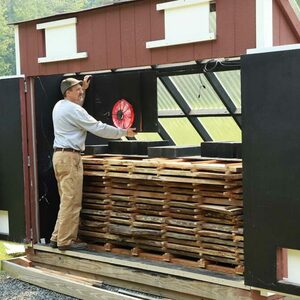
Q:
I finally have a jointer and planer, so for my next project, a table, I plan to buy roughsawn lumber. I managed to calculate the number of board feet I need, including waste. Is that number all I need to take to the lumberyard?
George Farra, Wyckoff, NJ
A:
Knowing the number of board feet will help you estimate the cost of your lumber, but it won’t help you pick out the best boards for your table.
A dimensioned drawing helps you find boards the right size for your parts. Mark them out, and keep track of what’s been found. That way, you’ll know when you’ve got enough lumber. When I go to the lumberyard, I take a drawing of my project that includes dimensions, a tape measure, and a grease pencil. This helps me find the right size boards and keeps me organized.
Let’s say your tabletop is 20 in. square. You could glue it up from two 11-in.-wide boards or three 8-in.-wide boards. Look first for a long 11-in.-wide board with attractive grain and color. Try to find one that’s long enough so you can get the entire top and a few other parts from it. Ideally, the board will be long enough to supply the aprons as well. If it’s not, look for a second one that’s a close match for grain and color.
Follow the same process when you choose boards for the legs, looking for the best grain and color match with the first board you chose.
As you pick boards, use the grease pencil to mark the parts and to check them off on your plan, ensuring that you’ve got enough material.
Fine Woodworking Recommended Products

Ridgid R4331 Planer

DeWalt 735X Planer

AnchorSeal Log and Lumber End-Grain Sealer























Log in or create an account to post a comment.
Sign up Log in